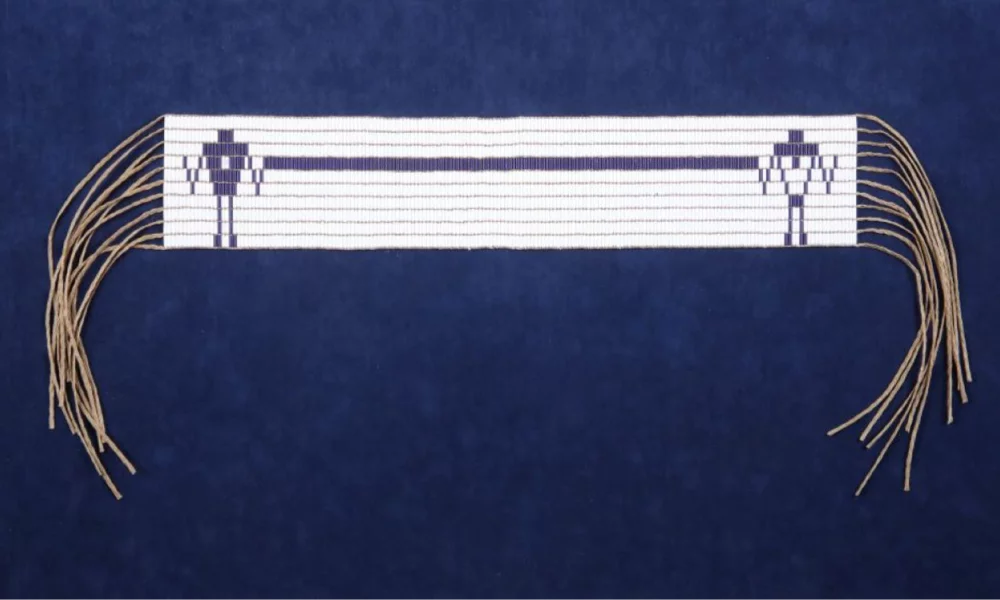Traditional Territory Acknowledgement
Goodes Hall
Smith School of Business at Queen's University is situated on traditional Anishinaabe and Haudenosaunee Territory. We are grateful to be able to be live, learn and play on these lands.
Anishinaabe pronounced Ah-nish-in-ah-bay. Haudenosaunee pronounced Ho-den-o-show-nee.
Longer acknowledgement
Goodes Hall, the home of Smith School of Business, is situated on Anishinaabe and Haudenosaunee Territory.
To acknowledge this Territory is to recognize its longer history, one that predates the establishment of the earliest European colonies. This land holds significant importance for the Indigenous people who live, migrate, and travel through here.
As we gather here in Kingston, we are sitting in the place that is protected by Indigenous peoples with a Treaty called the One Dish One Spoon, which was established to protect the harvesting of the land, waters, four legged and winged animals. This practice may seem like the old ways, but it can be said that this was the real beginning of commerce in Kingston.
We acknowledge what this Territory means for the Indigenous peoples who harvest the land, waters, wildlife, and who live, love, and pray on this land.
As we mutually enjoy the benefits of commerce, we are thankful for the opportunities that are provided to us by those that have come before.
Today we live side by side upon this land. Indigenous peoples continue to practice their spiritual ties to the land in relationship to the Territory and its other inhabitants. The Kingston Indigenous community continues to reflect the area’s Anishinaabe and Haudenosaunee roots and currently includes many other Nations from across Turtle Island.
SmithToronto
SmithToronto is situated on the traditional Territory of the Huron-Wendat and Petun First Nations, the Seneca, and the Mississaugas of the Credit River. We are grateful to be able to be live, learn and play on these lands.
Longer acknowledgement
SmithToronto is situated on Territory of the Huron-Wendat, Mississaugas of the Credit First Nation, Anishinaabe and Haudenosaunee.
To acknowledge this Territory is to recognize its longer history, one that predates the establishment of the earliest European colonies. This land holds significant importance for the Indigenous peoples who live, migrate, and travel through here.
As we gather here in downtown Toronto, we are sitting in the place that is protected by Indigenous peoples with a Treaty called the One Dish One Spoon, which was established to protect the harvesting of the land, waters, four legged and winged animals. This practice may seem like the old ways, but it can be said that this was the real beginning of commerce in Toronto.
We acknowledge what this Territory means for the Indigenous peoples who harvest the land, waters, wildlife, and who live, love and pray on this land.
As we enjoy the benefits of commerce, we are thankful for the opportunities that are provided to us by those that have come before.
Today we live side by side upon this land. Indigenous peoples continue to practice their spiritual ties to the land in relationship to the Territory and its other inhabitants. The Toronto Indigenous community continues to reflect the area’s Wendat, Mississauga, Anishinaabe and Haudenosaunee roots and currently includes many other Nations from across Turtle Island.
Métis Flag
Represents the joining of two cultures, First Nations and European, from which a new Indigenous people emerged – the Métis – with their own unique culture, traditions, language (Michif), and way of life, collective consciousness and nationhood.

Anishinabek Nation Flag
Features an Animikii (thunderbird) at the centre. According to traditional teachings, this powerful, spiritual animal is said to create the sound of thunder just by the flapping of its wings. The bird is also a protector with the ability to bring rain that nurtures and cleanses the earth.
Queen’s University is situated on Anishinaabe and Haudenosaunee Territory.

Six Nations Confederacy
Represents the Hiawatha wampum belt – the emblem of unity that brought peace among the Five Nations – Seneca, Cayuga, Onondaga, Oneida, and Mohawk – later adding the sixth Nation, the Tuscorora.
Collectively, the confederation’s people are known as the Haudenosaunee.
Queen’s University is situated on Anishinaabe and Haudenosaunee Territory.

Two Row Wampum
In 1613, the Haudenosaunee and Dutch formed an everlasting relationship built on friendship and peace.
A belt, made of purple and white wampum shells, was designed to symbolize this new venture. The purple rows represent the two different cultures and traditions as they travel side-by-side on the river of life. The white rows represent peace, friendship and respect.

Two Row Wampum
Wampum belts have a fond significance to Queen’s University.
The Clan Mothers at Tyendinaga and the Grandmothers’ Council in Kingston presented the friendship wampum belt to the University Senate in 2017.
This precious symbol of friendship and peace is present at all Senate meetings.
